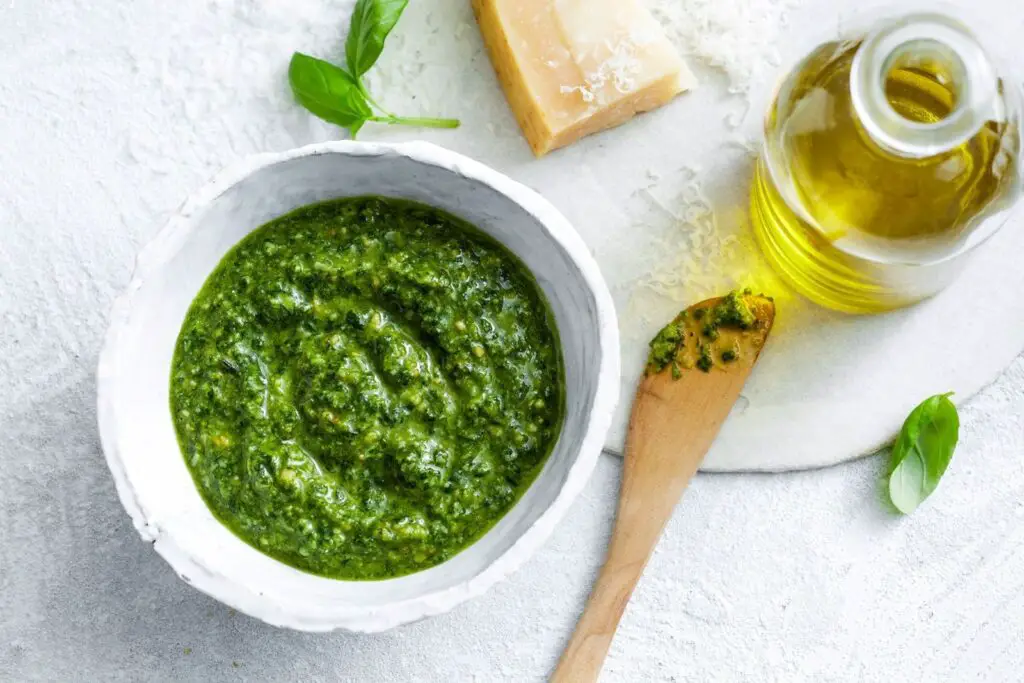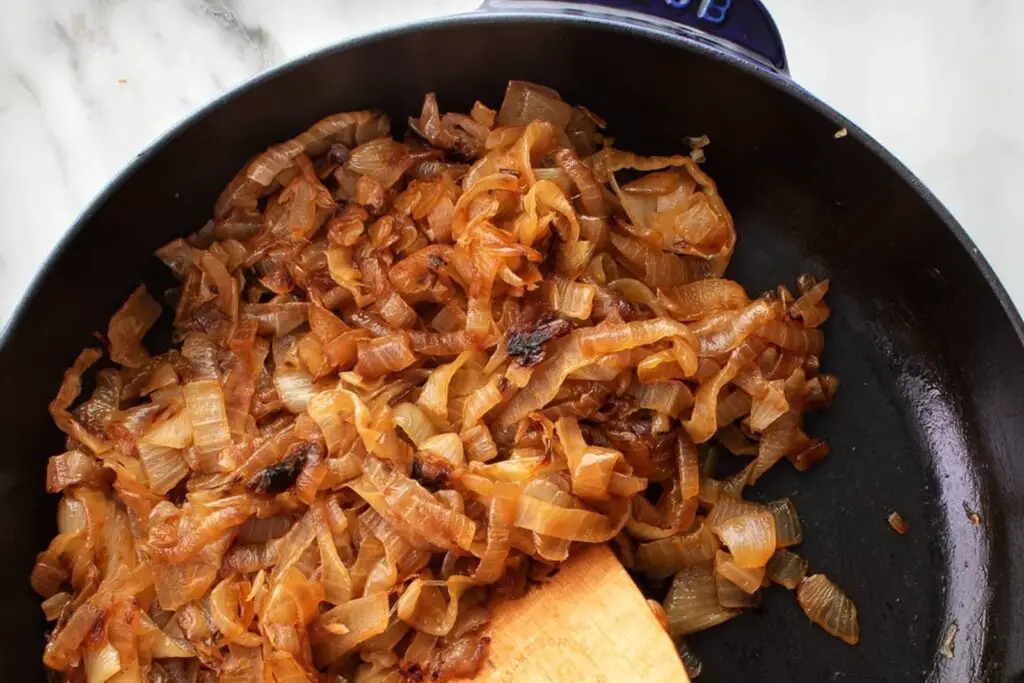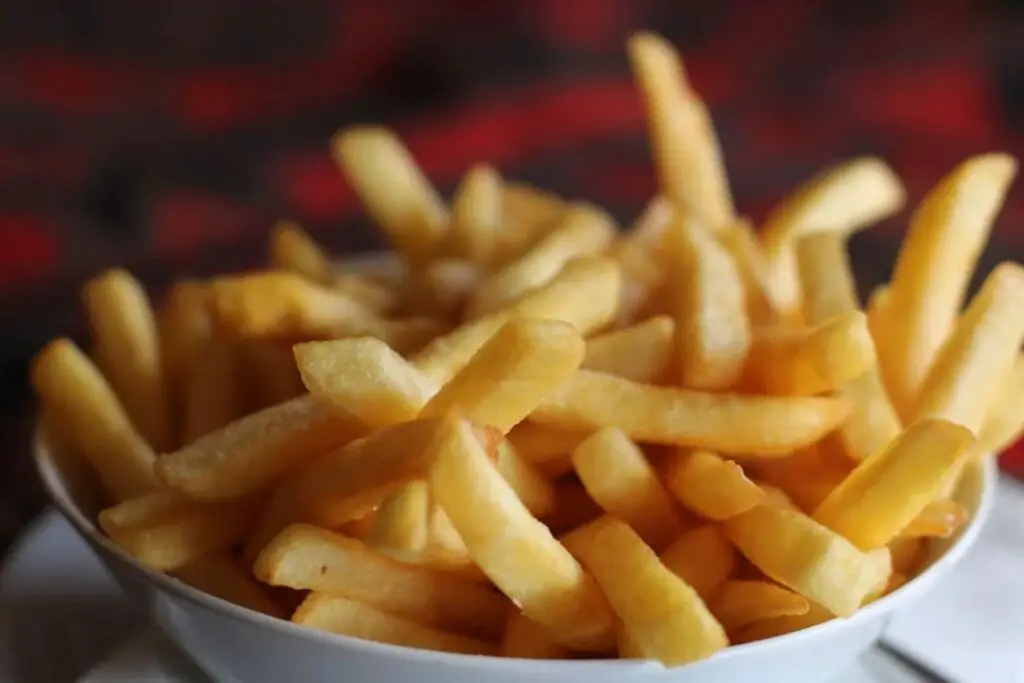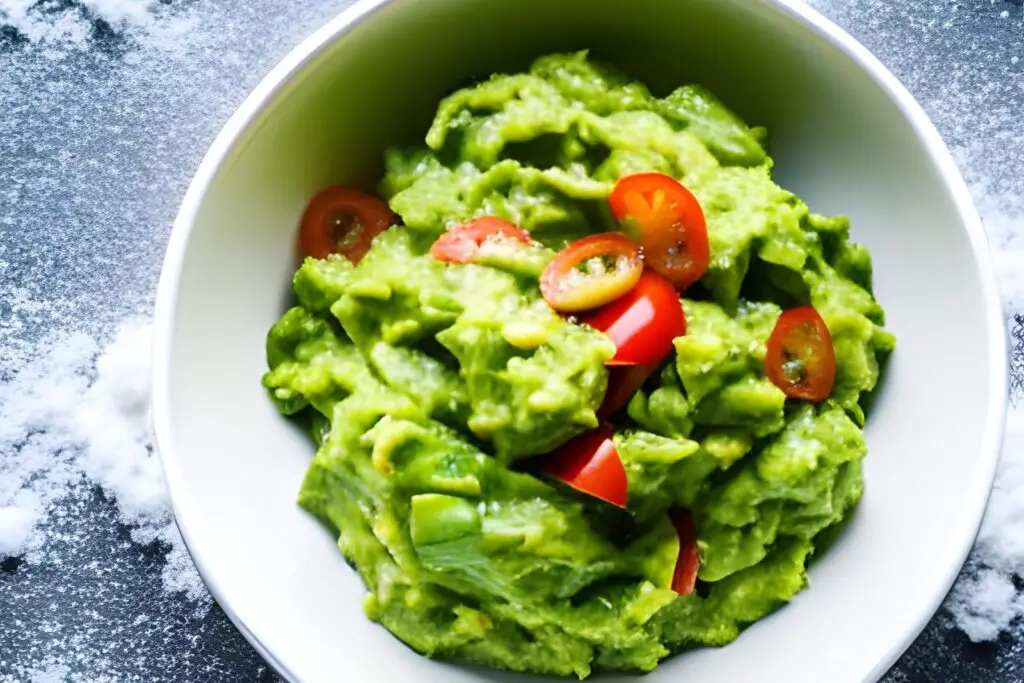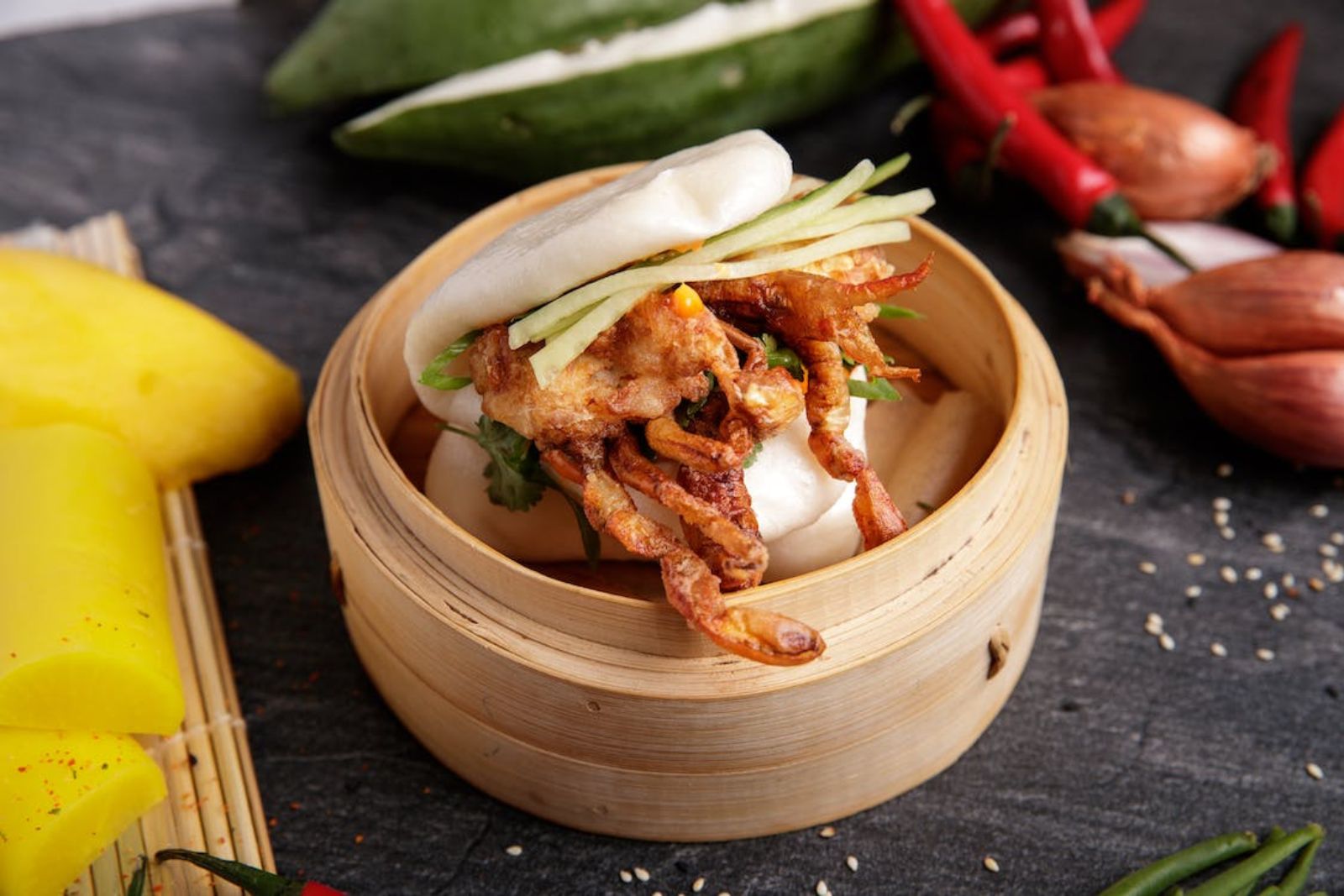
Bao buns, the staple of Chinese cuisine that has gained popularity worldwide for their soft and pillowy texture. Bao buns are fluffy steamed bread rolls, traditionally filled with a variety of delicious ingredients like savory meats, vegetables, or even sweet fillings. These delightful buns are not only visually appealing but also offer a delightful combination of textures and flavors.
If you find yourself with extra bao buns or want to prepare a large batch in advance, freezing them is a fantastic option. In this guide, we’ll delve into the art of freezing bao buns, sharing expert tips and techniques to ensure that their softness and flavors are preserved, allowing you to enjoy these delightful treats whenever you crave a taste of their irresistible charm, whether it’s for a quick meal, a delightful snack, or a memorable gathering with family and friends.
Here are the simple steps to freeze bao buns:
Step 1: Preparation
In the first step of freezing bao buns, proper preparation is key to ensuring the best results. Here’s an explanation of what this step entails:
- Gathering Necessary Supplies: To freeze bao buns effectively, you’ll need a few essential supplies. Firstly, you’ll require freezer-safe storage containers or resealable bags. These containers or bags should be able to withstand the freezing temperatures without cracking or leaking. Alternatively, you can opt for resealable bags, which offer convenience and take up less space in the freezer.
- Secondly, you’ll need parchment paper or wax paper. These papers will be used to wrap each individual bao bun, preventing them from sticking together during the freezing process. Parchment paper is a preferred choice due to its non-stick properties, but wax paper can also work.
- Lastly, having a marker for labeling is crucial. Labeling the storage containers or bags with the current date allows you to keep track of how long the bao buns have been in the freezer. This ensures that you consume them within the recommended time frame for the best taste and texture.
- Cooling Bao Buns to Room Temperature: Before placing your bao buns in the freezer, it’s important to let them cool completely to room temperature. This step is essential to prevent moisture buildup inside the packaging, which could lead to ice crystals forming and negatively affect the texture of the buns.
By gathering the necessary supplies and ensuring the bao buns are cooled to room temperature, you set the stage for a successful freezing process. These precautions help maintain the quality of the bao buns and prevent any unwanted texture or taste changes caused by moisture or improper cooling.
Step 2: Wrap Individual Bao Buns
The focus is on individually wrapping each bun to maintain its quality and shape. Here’s a breakdown of this process:
- Cutting Parchment Paper or Wax Paper: Begin by preparing squares of parchment paper or wax paper. The size of each square should be large enough to fully enclose a single bao bun. It’s recommended to cut the paper into squares that provide ample coverage without excessive overlapping.
- Placing the Bao Bun: Take one square of parchment paper or wax paper and position it in front of you. Carefully place a bao bun in the center of the square. Ensure that the bun is sitting evenly on the paper and that there is enough space around the edges to fold and seal the package securely.
- Folding the Paper: Gently fold the sides of the parchment paper or wax paper up and around the bao bun. Use your fingers to tuck and secure the paper, creating a snug and enclosed package. The goal is to wrap the bun completely while maintaining its shape and preventing any exposure to the air.
- Repeating the Process: Repeat the wrapping process for each individual bao bun. Cut additional squares of parchment paper or wax paper as needed. Take your time to wrap each bun carefully, ensuring that they are all neatly packaged.
By wrapping each bao bun individually, you provide a protective layer that helps to maintain their shape and prevent them from sticking together. This step is particularly important if you plan to store the buns for an extended period. The individual wrapping also makes it easier to thaw and reheat only the desired number of buns when you’re ready to enjoy them.
Step 3: Proper Storage
Proper storage is essential to maintain their quality and prevent them from sticking together. Let’s delve into the details:
- Resealable Bags: If you opt for resealable bags for storage, place the individually wrapped bao buns inside the bag. Make sure to remove as much air as possible from the bag before sealing it. Removing excess air helps minimize the risk of freezer burn and preserves the texture and flavor of the buns.
- Freezer-Safe Containers: If you choose to use freezer-safe containers, arrange the individually wrapped bao buns in a single layer inside the container. It’s important to leave a small space between each bun to prevent them from sticking together during freezing. This space allows for easy removal of individual buns later on.
- Multiple Layers: If you have more bao buns to store and need to stack them in multiple layers, place a sheet of parchment paper between each layer. This precaution prevents the buns from freezing together, making it easier to retrieve them individually when needed.
Proper storage ensures that the bao buns maintain their individuality and don’t clump together, allowing for convenient retrieval and thawing of desired quantities. Whether you choose resealable bags or freezer-safe containers, the key is to prevent the buns from sticking or getting damaged during the freezing process.
Step 4: Label and Date
Labeling and dating the storage containers or bags are crucial for the organization and ensuring that you consume the buns within the recommended time frame. Here’s why this step is important:
- Avoiding Confusion: By labeling your storage containers or bags, you eliminate any confusion that may arise later on. Proper labeling allows you to easily identify the contents and differentiate between various batches of frozen bao buns. This is particularly helpful if you have different flavors or variations of bao buns in your freezer.
- Tracking Freezing Time: By noting the current date on each label, you establish a reference point for tracking how long the bao buns have been in the freezer. This information is vital for food safety and quality. Bao buns, like any other food, have a recommended storage duration in the freezer. Knowing the freezing time helps ensure that you consume the buns before they start to deteriorate in quality.
- Ensuring Freshness: Properly labeled and dated storage containers or bags allow you to prioritize the consumption of older batches of frozen bao buns. This ensures that you use the buns that have been frozen for the longest time first, reducing the risk of forgetting about them and letting them stay in the freezer for too long.
By labeling and dating your storage containers or bags, you create an organized system that helps you keep track of the freezing time and ensures that you enjoy the bao buns while they are at their best. It’s a simple step that goes a long way in maintaining food safety and quality control.
Step 5: Place in the Freezer
The focus is on the actual freezing process and ensuring optimal storage conditions. Let’s break down these steps:
- Placement in the Freezer: After labeling your storage containers or bags, carefully place them in the freezer. It’s important to position them in a flat and stable manner to maintain the shape and integrity of the bao buns. Placing the containers or bags on a flat surface, such as a shelf or tray, helps prevent any potential deformation or squishing of the buns during the freezing process.
- Protection from Crushing: To avoid any damage to the bao buns, it’s advisable to keep them away from items that may crush or deform them. Ensure there is sufficient space around the containers or bags to prevent them from being squeezed or pressed by other freezer items. This precaution helps preserve the visual appeal and texture of the bao buns.
- Freezing Time: The specific freezing time may vary depending on your freezer’s temperature and the size of the bao buns. However, as a general guideline, bao buns can be stored in the freezer for up to three months without significant quality loss. It’s important to note that while they can be safely stored for longer periods, the texture and taste may gradually deteriorate over time.
By freezing the process you ensure that your bao buns are stored in the best possible conditions. Placing them in a flat position and protecting them from potential crushing help maintain their shape and appearance. Remember to check the recommended freezing times and consume the buns within the optimal period for the best taste and texture.
Step 6: Thaw and Reheat
In the sixth and final step of freezing bao buns, the focus shifts to thawing and reheating the frozen buns to ensure they are ready to be enjoyed. Let’s dive into the details of this step:
- Thawing Process: Start by removing the desired number of frozen bao buns from the freezer. Transfer them to the refrigerator, where they will thaw slowly and safely. It’s best to allow the buns to thaw overnight or for several hours, depending on their size and the temperature of your refrigerator. Thawing in the refrigerator helps maintain the texture and taste of the buns while minimizing the risk of bacterial growth.
- Fully Defrosting: Ensure that the bao buns are fully defrosted before proceeding with reheating. You can check by gently pressing the center of the bun to see if it feels soft and thawed throughout. Thawing times may vary, so it’s important to be patient and allow the buns to thaw completely for the best results.
- Reheating Options: Once the bao buns are fully defrosted, it’s time to reheat them. The most common method is steaming. Place the buns in a steamer basket or bamboo steamer, ensuring they have some space between them to allow for even heating. Steam the buns for approximately 5-7 minutes until they are heated through. The exact time may vary depending on the size and thickness of the buns.
By properly thawing and reheating the bao buns, you ensure that they are warmed throughout and ready to be enjoyed. Taking the time to thaw them in the refrigerator and using appropriate reheating methods, such as steaming or microwaving, helps to preserve the soft and fluffy texture of the bao buns while ensuring they are safe to consume.
Other related questions
Can you refreeze ban buns?
Refreezing bao buns is generally not recommended due to potential quality loss. When bao buns are initially frozen, the freezing and thawing processes can affect their texture and taste. Refreezing can further degrade their quality and lead to a less enjoyable eating experience. It is best to consume bao buns within the recommended time frame after the initial freezing to ensure optimal taste and texture.
How do I know if the ban buns have gone bad after being frozen?
To determine if frozen bao buns have gone bad, observe their appearance, texture, and smell. If the buns have developed an unusual color, such as significant discoloration or mold growth, it is a sign of spoilage. A change in texture, such as excessive dryness or sogginess, can also indicate deterioration. Additionally, a sour or unpleasant odor suggests that the buns have gone bad and should not be consumed. It is crucial to prioritize food safety and discard any bao buns that show signs of spoilage after being frozen.
Can I freeze the bao buns with the egg inside?
Yes, you can freeze bao buns with eggs inside. However, it’s important to consider that the texture of the egg may change slightly after freezing and reheating. To maintain the best quality, ensure that the egg is fully cooked before filling the buns. Wrap the bao buns individually and store them in freezer-safe containers or bags, following the proper freezing and thawing guidelines to retain their taste and texture.
Can I freeze the bao buns dough?
Yes, you can freeze bao bun dough for future use. After kneading and allowing the dough to rise, shape it into buns or leave it in a ball form. Wrap the dough tightly in plastic wrap or place it in an airtight container. Label the package with the date and store it in the freezer. When needed, thaw the dough in the refrigerator overnight and let it come to room temperature before shaping and baking the buns.
Can I freeze the bao buns with different toppings?
Yes, you can freeze bao buns with different toppings. However, it’s important to note that the texture and appearance of some toppings may change after freezing and thawing. Toppings such as sauces, glazes, or delicate garnishes might be best added after reheating the bao buns to maintain their freshness and visual appeal. Properly wrap the bao buns individually and store them in freezer-safe containers or bags to preserve their overall quality.
Can you pan-fry frozen bao buns?
Yes, pan-frying frozen bao buns is a popular cooking method that can yield delicious results. Heat some oil in a non-stick pan over medium heat to fry frozen bao buns. Place the frozen buns in the pan, ensuring they have some space between them. Cook for a few minutes on each side until the buns are golden brown and crispy.


